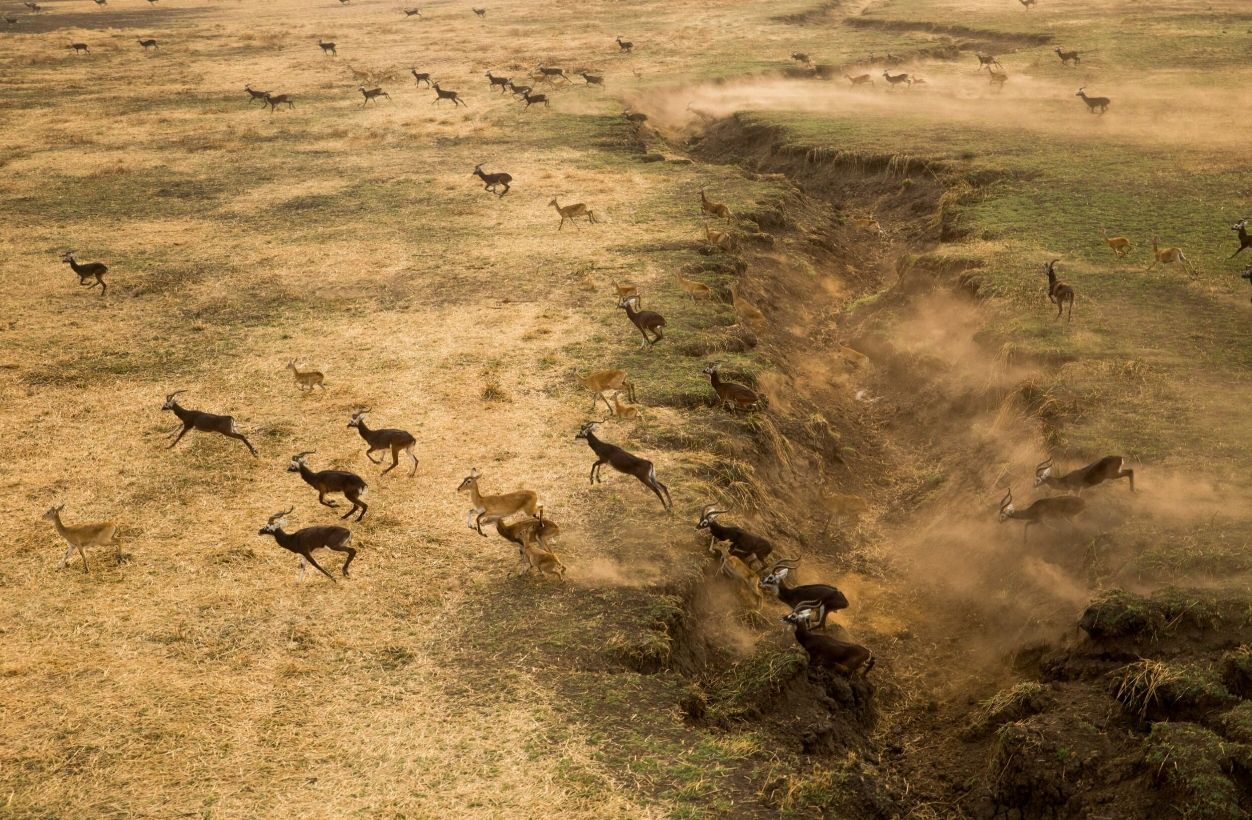Around 6 million antelope have been recorded on a trek across East Africa, marking the world’s largest land mammal migration ever recorded.
The scale of the Great Nile Migration recently became apparent through an ongoing project between African Parks and the Government of South Sudan.
Between April 28 and May 15, 2023, after the first rains of the season, planes were used to carry out an extensive aerial survey of the Boma Badingilo Jonglei Landscape in the east of South Sudan, documenting the migration of roughly 5 million white-eared kob, 300,000 tiang, 350,000 Mongalla gazelle, and 160,000 Bohor reedbuck.
“The results of this survey are nothing short of staggering. The astonishing scale of the migration is only equaled by the responsibility to ensure that it survives into the future in an extremely complex landscape,” Peter Fearnhead, CEO of African Parks, said in a statement.
Along with the galavanting antelopes, the survey noted how elephants, giraffes, lions, and cheetah populations have persisted in the area. Likewise, there are still massive populations of large birds, including open-billed stork, marabou stork, yellow-billed stork, Abdim’s stork, woolly-necked stork, black-crowned cranes, herons, and several species of vultures.

White-eared kob tackle a difficult part of the migration.
Image credit: ©Marcus Westberg
While this may suggest that wildlife is abundant in the region, its biodiversity is facing a myriad of threats. Comparisons with surveys carried out in the 1980s show there’s been “catastrophic declines of most sedentary species,” such as elephant, warthog, cheetah, hippopotamus, and buffalo.
One of the main threats is illegal poaching, which Fearnhead said is “at a scale that we have never witnessed before.”
To make matters more difficult, South Sudan went through a bloody civil war over the last few decades, and ethnic violence still lingers. Along with causing immense human suffering, the conflict has impacted the movement of animals and made wildlife surveys almost impossible.
As the country strives to recover, the future of these rich ecosystems could ultimately hinge on how human relations in the area resolve.
“This wildlife and larger ecosystem is the basis for survival for multiple ethnic groupings which are often in conflict with each other over resources. Successful management of this landscape will only be possible through building trust with and amongst these ethnic groupings,” explained Fearnhead.
“Working with these local communities to protect this vital ecosystem will help perpetuate this global phenomenon whilst also bringing about stability, safety, and security and creating a sustainable future for the people who live in this area – many of whom are still recovering after years of war and disruption,” he continued.
Source Link: Six Million Animals Make Moves In The World’s Largest Land Mammal Migration